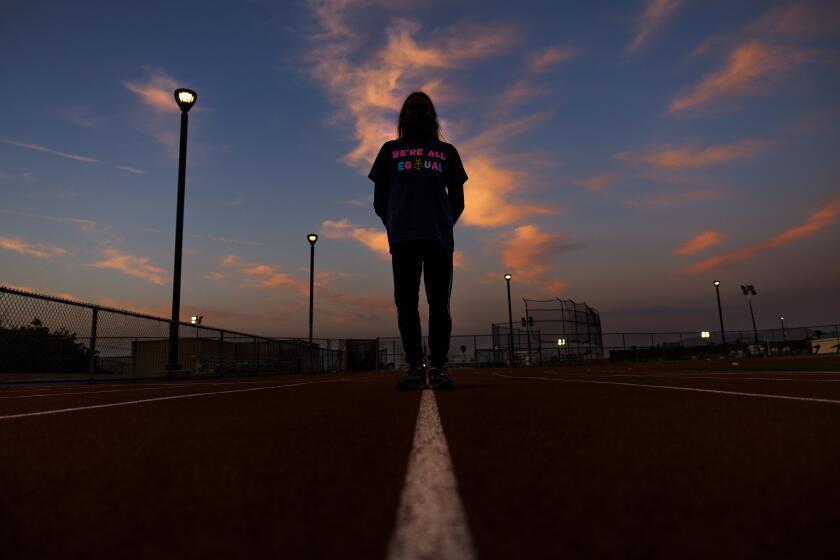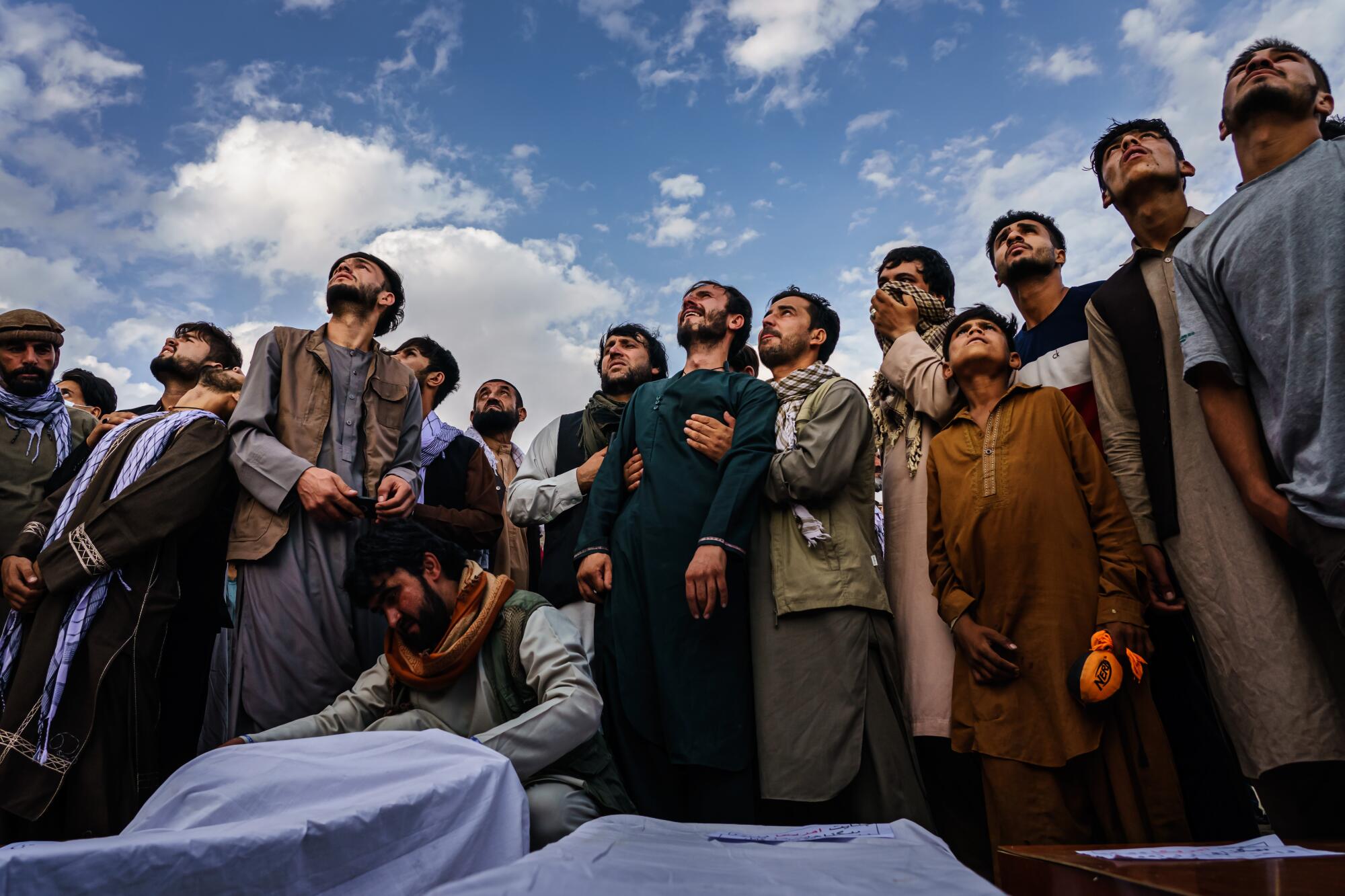
- Share via
In September, Los Angeles Times photojournalists covered the fallout of the U.S. withdrawal of Afghanistan as the Taliban took control, watched as fire threatened California’s giant sequoias, followed the candidates in the final days of the state’s recall election, stood on the red carpet of the Emmys and saw a mother recovering from COVID-19 finally connect with her newborn son.
Below are the stories behind these photos and others published over the last month as told by the photographers who took them.
Brian van der Brug
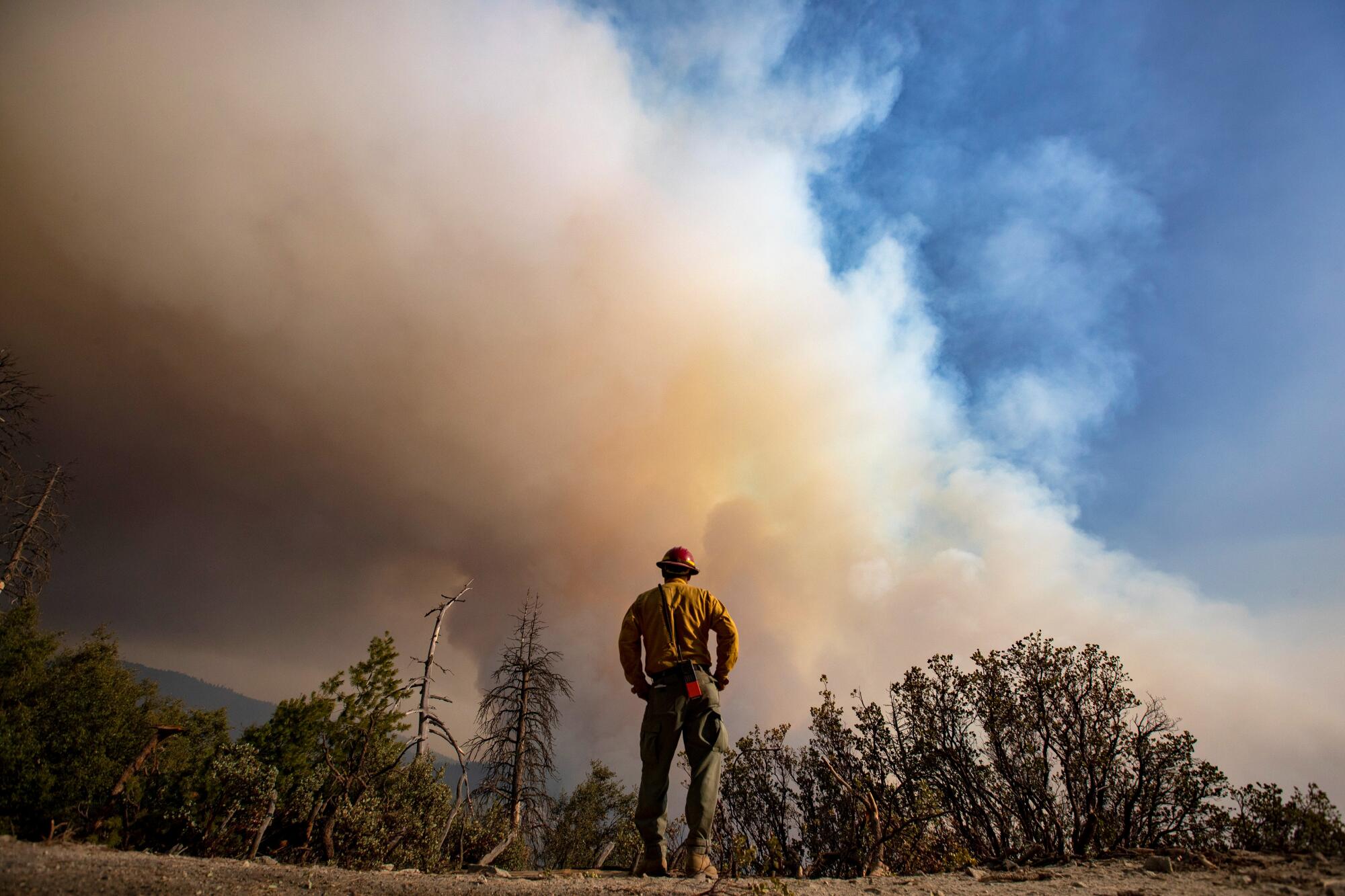
Covering fires can be pretty straightforward. Find the fire front and document firefighters working to contain it.
The KNP Complex fire burning in the Sequoia National Park was different. The U.S. Park Service closed it to the press, making it nearly impossible to produce images of the threat to the giant sequoias.
The Windy fire, burning in the nearby Sierra National Forest, imperiled groves of sequoias as well, so that’s where we headed. Access here was also disappointing. The fire burned in rugged terrain, and a sudden change in weather made our trek through the Tule River Reservation to the fire line unsafe. I wanted to convey the firefighters’ point of view, standing there watching as fire ravaged the forest from afar.
Allen J. Schaben
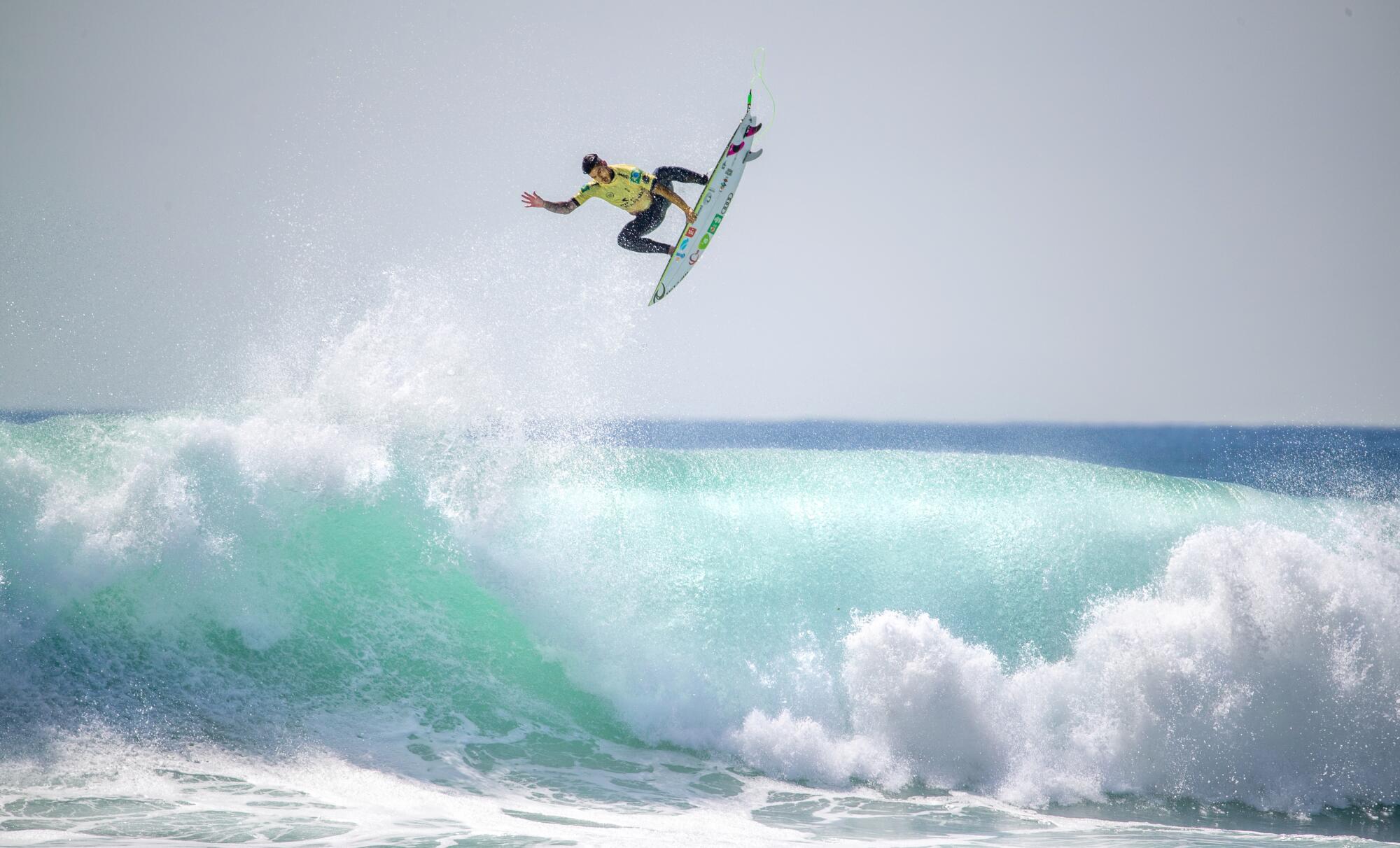
For the first time, the Rip Curl World Surf League title was decided in a one-day, winner-takes-all event. As a fellow goofy-footer, I watched Gabriel Medina of Brazil pull off an eye-popping backflip on one of the best lefts in California during a free-surf session before the contest and had a feeling that if Medina could pull the move off during the finals, that would seal the deal.
Knowing the danger of being blocked by a fan or fellow photographer when Medina left, I arrived at Lowers in the dark to set up my tripod and long telephoto lens on the rocks to be in an excellent position to photograph both the rights and lefts at the famed break. Knowing the surfers’ styles helped me anticipate their moves. A decrease in coronavirus cases, a large swell, the best surfers in the world, no wind, good tide and sunny skies allowed this moment to happen. Medina edged out countryman Felipe Toledo to win his third world title.
Francine Orr
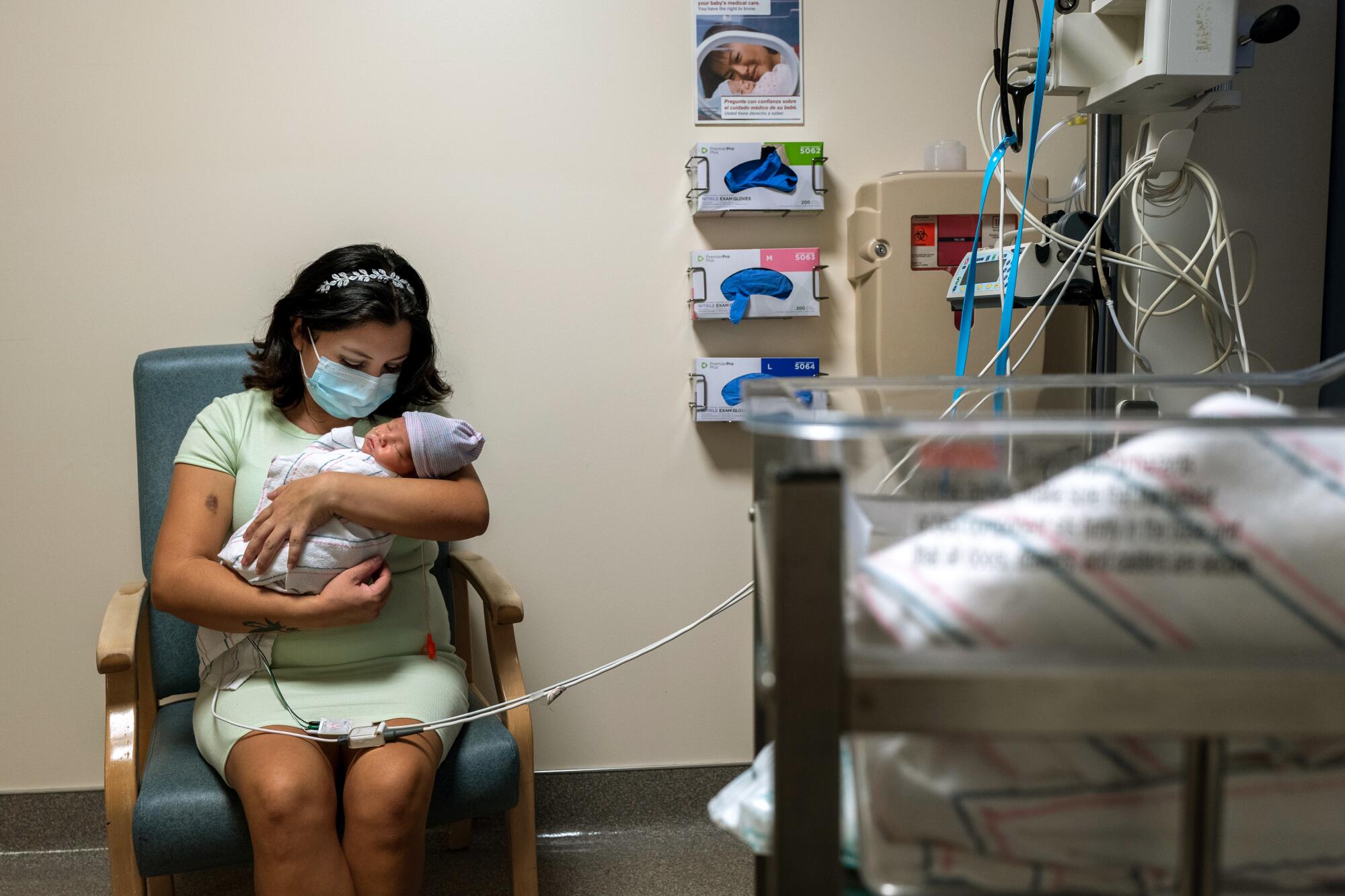
“How fast can you get to the hospital without speeding,” asked a voice on the phone. “Twenty minutes,” I said. I didn’t stop to ask why.
I didn’t know as I put on my shoes and rushed out the door that Anayeli Gervacio, 34, a woman I had photographed in a COVID-19 unit recently, was also running back to the hospital to hold her baby for the first time.
When I first met her, she was sitting alone in a hospital room crying. She was worried about her newborn, her husband and their 2-year-old at home.
Gervacio had tested positive for the virus while she was pregnant. The delivery was an emergency C-section because the baby was not getting enough oxygen. After being discharged from the COVID unit, Anayeli had to quarantine from her family. She then had to test negative before she could return to the hospital to hold her newborn for the first time.
I arrived at the hospital two minutes before she did, just long enough to wash my hands. I know this because they have timers next to the sink. She was surprised to find me there. We were both surprised — a gift.
Gervacio thanked me and told me she wanted her son to have a photo so he would see how strong he was from the start. Her son’s name is Emmanuel.
Irfan Khan
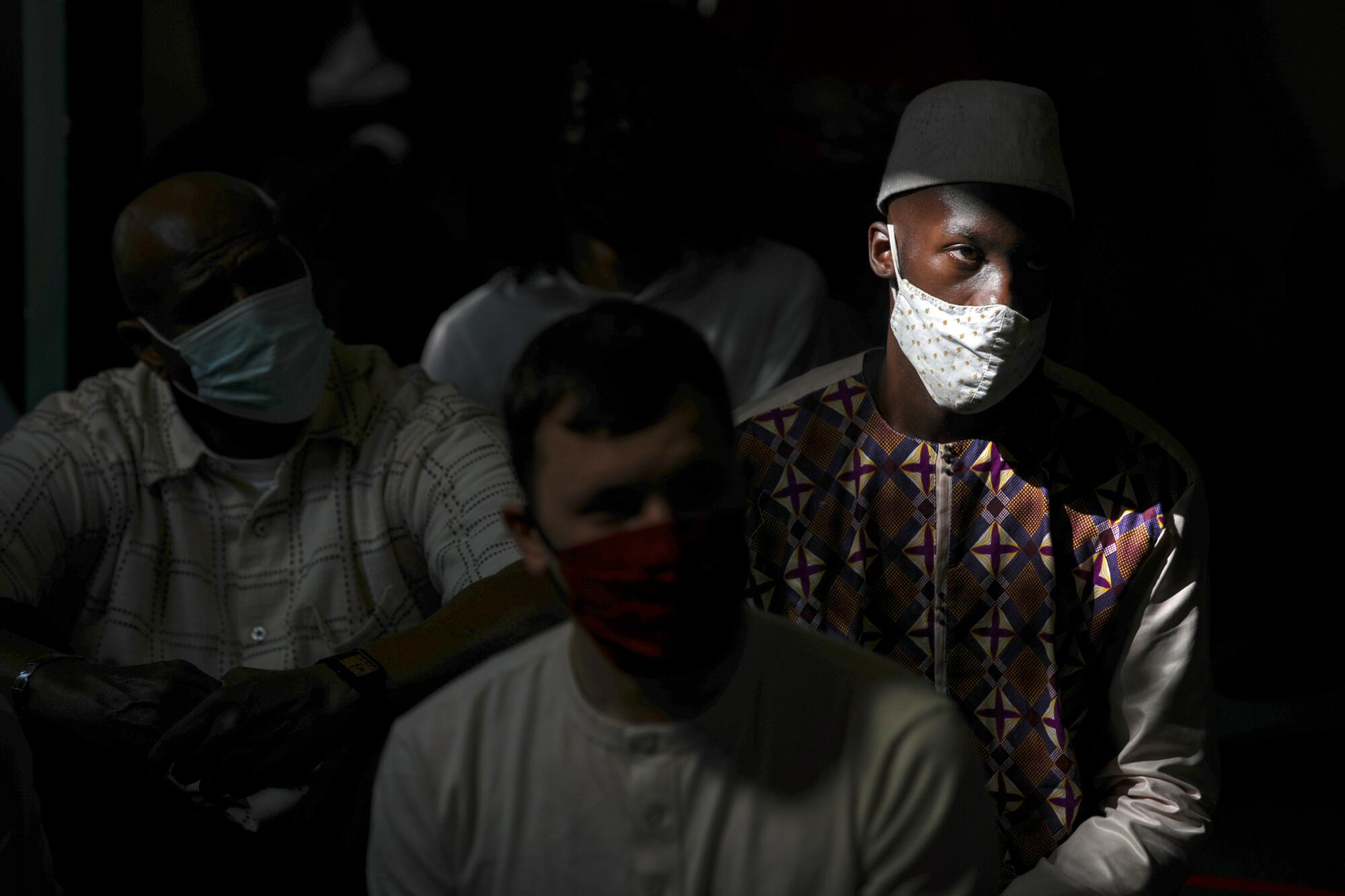
After hearing that Rep. Karen Bass (D-Los Angeles) was going to introduce House Resolution 541 to get recognition of July as Muslim American Heritage Month, I went searching for the Muslim heritage of Los Angeles. With the efforts of local Muslim leaders and other community activists in 2014, the L.A. City Council had already adopted July as Muslim American Heritage Month. When stories about Muslims in America are done, the media mostly focus on Middle Eastern or South Asian Muslims; Black Muslims hardly get much exposure. I decided to do a story on Black Muslim heritage in Los Angeles. I picked Masjid Bilal Islamic Center, lead by Imam Abdul-Karim Hasan, as my starting point. While covering the Eid al-Adha holiday prayers at the mosque, I photographed Gregory Holmes in traditional Senegalese clothes, hit by a shaft of morning light.
Marcus Yam
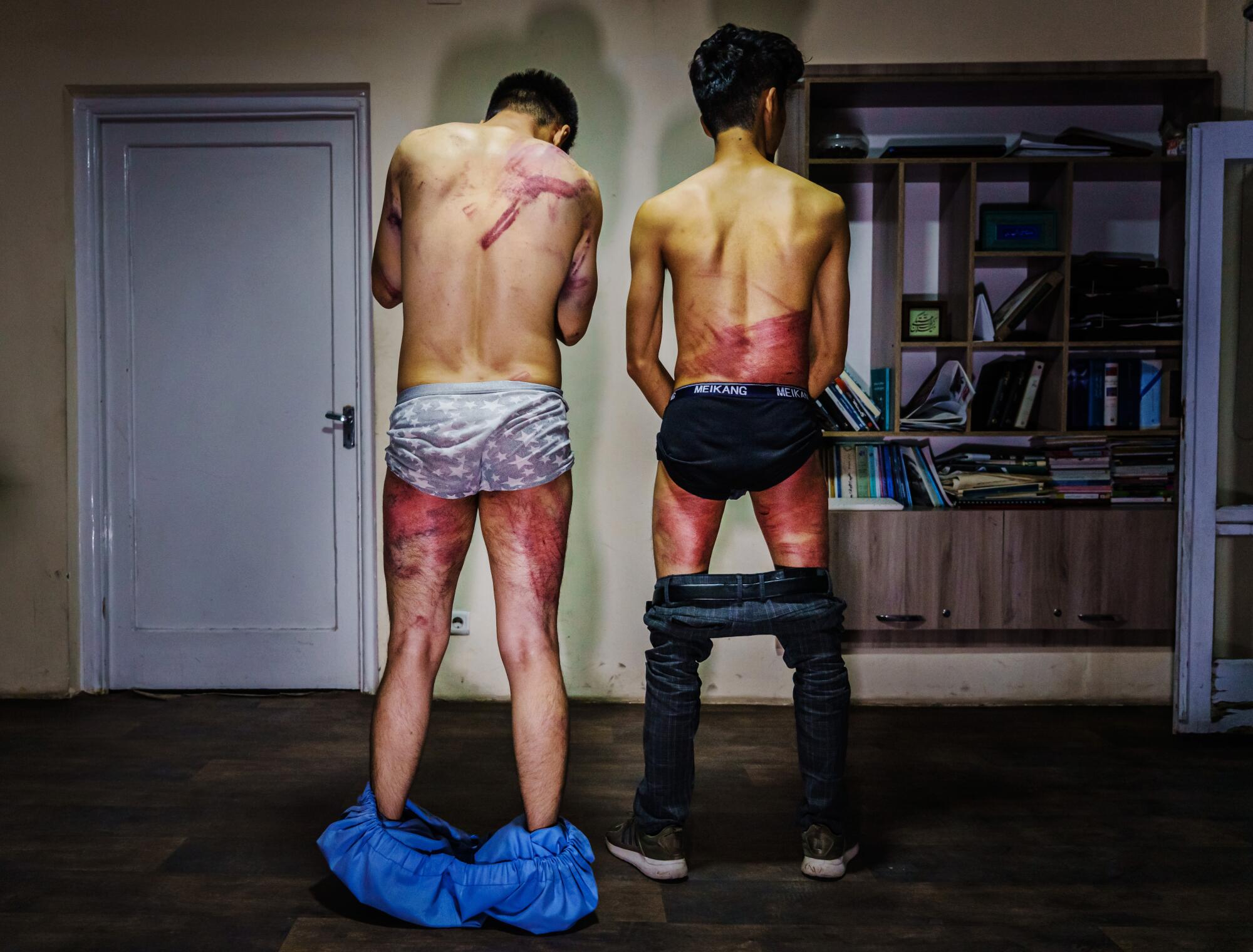
On Sept 8, journalists from the Afghan newspaper Etilaat Roz were apprehended by the Taliban for filming a rally for women’s rights outside a police station at Karte Char. This came just after the Taliban announced its all-male interim government made up of stalwarts with zero representation for women or ethnic minority groups — failing to keep their promise of an inclusive government. The two journalists were arrested and tortured by the Taliban. As they were being beaten in custody, they said the Taliban mocked them: ‘Are you filming us now?’ When news of their arrest and injuries started to surface, I reached out to the publisher. I expressed the need to chronicle their testimony and document the Taliban’s treatment of journalists.
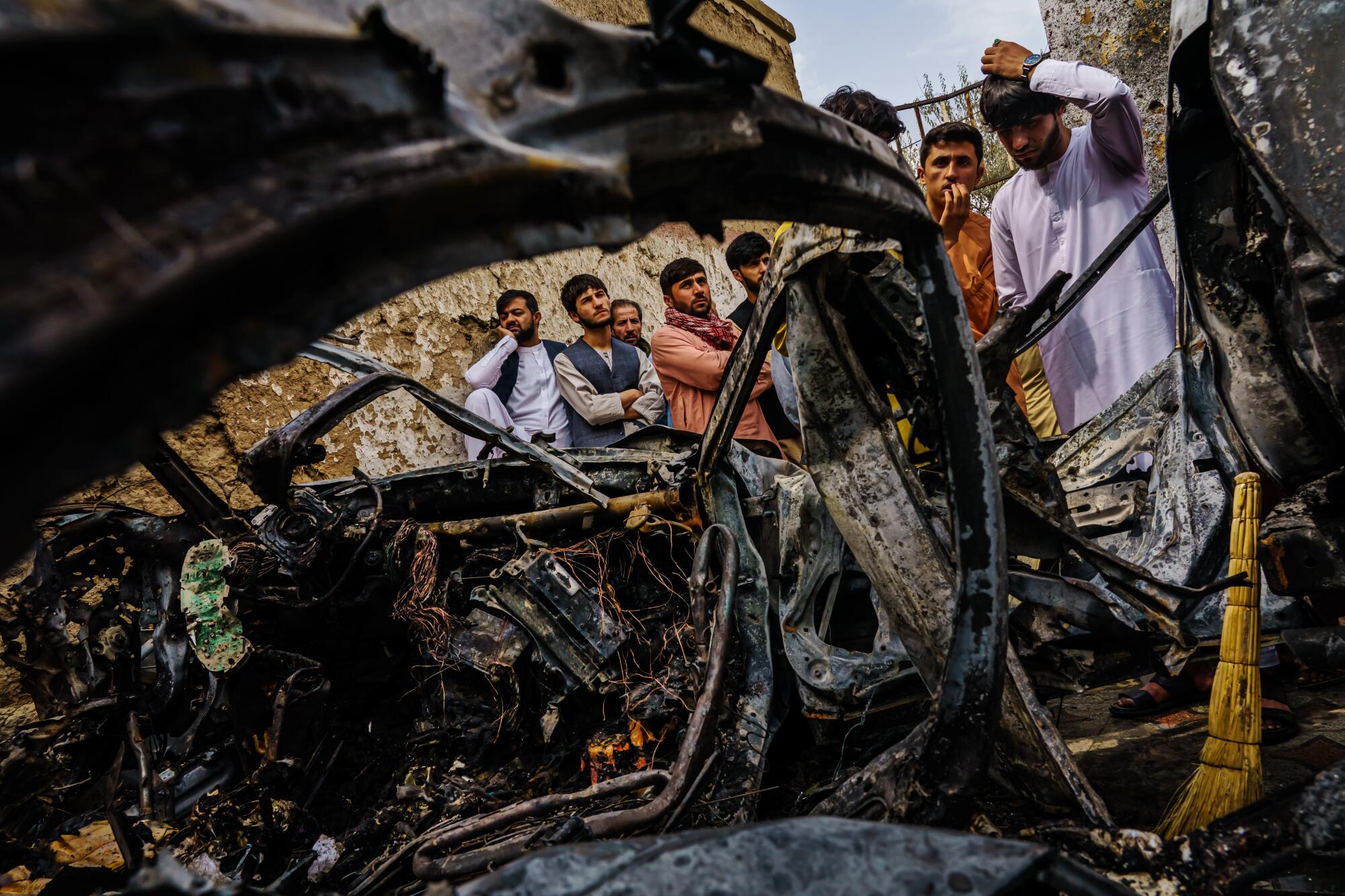
A Hellfire missile launched from a U.S. drone struck a vehicle in the compound of the Ahmadi family home in the neighborhood of Khwaja Burgha in Kabul, killing 10 civilians, including seven children. Initially, the U.S. military claimed it was targeting Islamic extremists, but a month later acknowledged that it had made a “tragic mistake” in what was a tragic coda to a messy and controversial 20-year war. When we arrived, the smell of charred remains still lingered in the air and family members were grieving over their loss. We climbed up and investigated the wreckage and documented the attack’s aftermath through pictures and testimonies from neighbors and family members.
Carolyn Cole

For a story on air pollution, I visited the L.A. neighborhood of Wilmington, which has one of the highest ozone pollution levels in the country. The predominately Latino community is surrounded by five oil refineries and three freeways filled with trucks serving the ports of Los Angeles and Long Beach.
Drop down off the highway, and you will find young people playing after-school sports in the shadow of one refinery. I wanted that juxtaposition, so when I saw a young football team sprinting up the hill, I rushed over to catch it. It makes me angry that they don’t have a better place to play. Many families in the area can’t afford to move away. Meanwhile, oil companies continue to pollute by buying carbon offsets in remote areas as far away as Alaska, which does little to clean the air for those living next door.
Wally Skalij
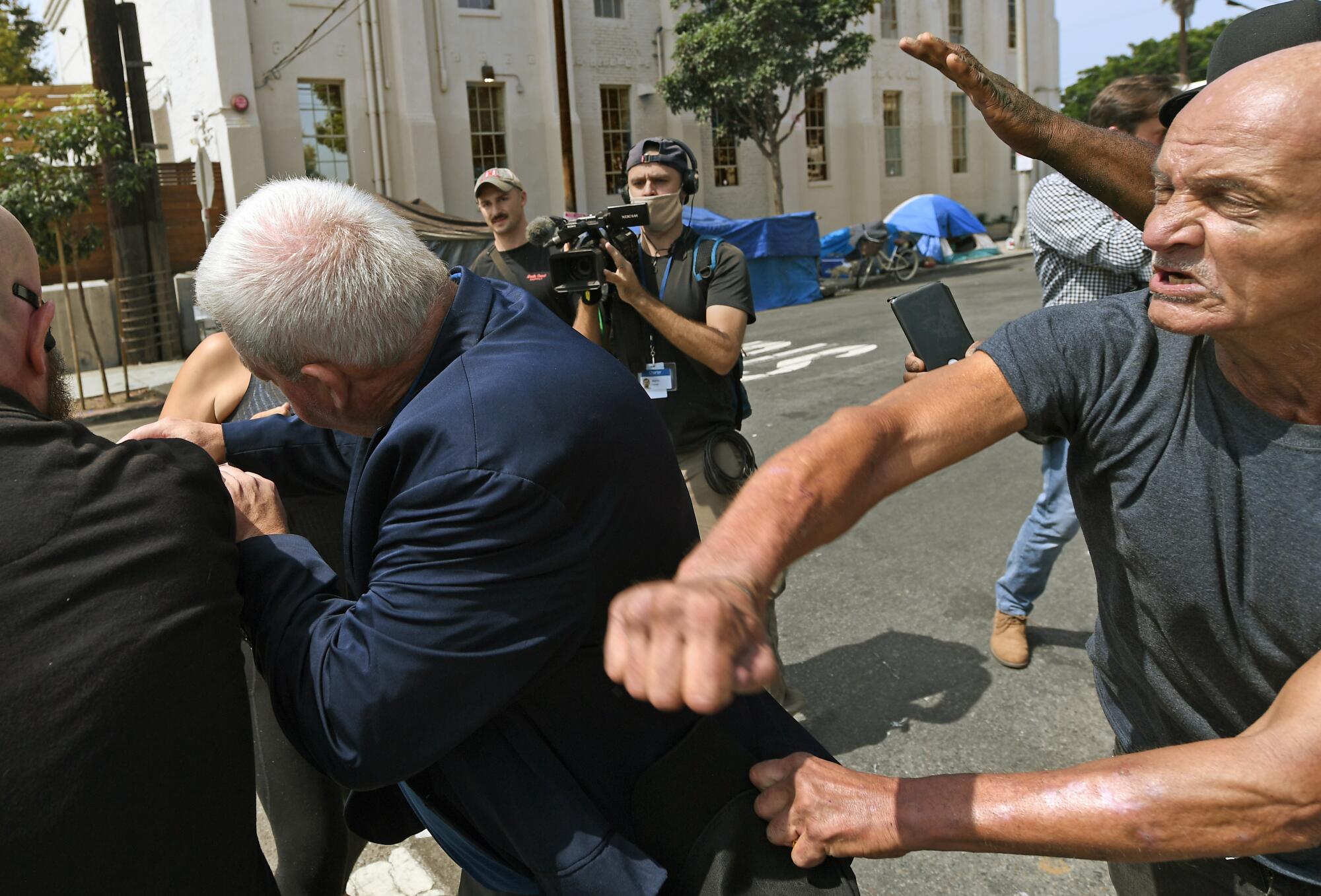
As gubernatorial recall candidate Larry Elder walked through a homeless encampment in Venice, the homeless themselves became agitated to a point where one of them took a swing at an Elder staff member. The same man squared off with me, but I just kept walking and ignored it.
Jay L. Clendenin
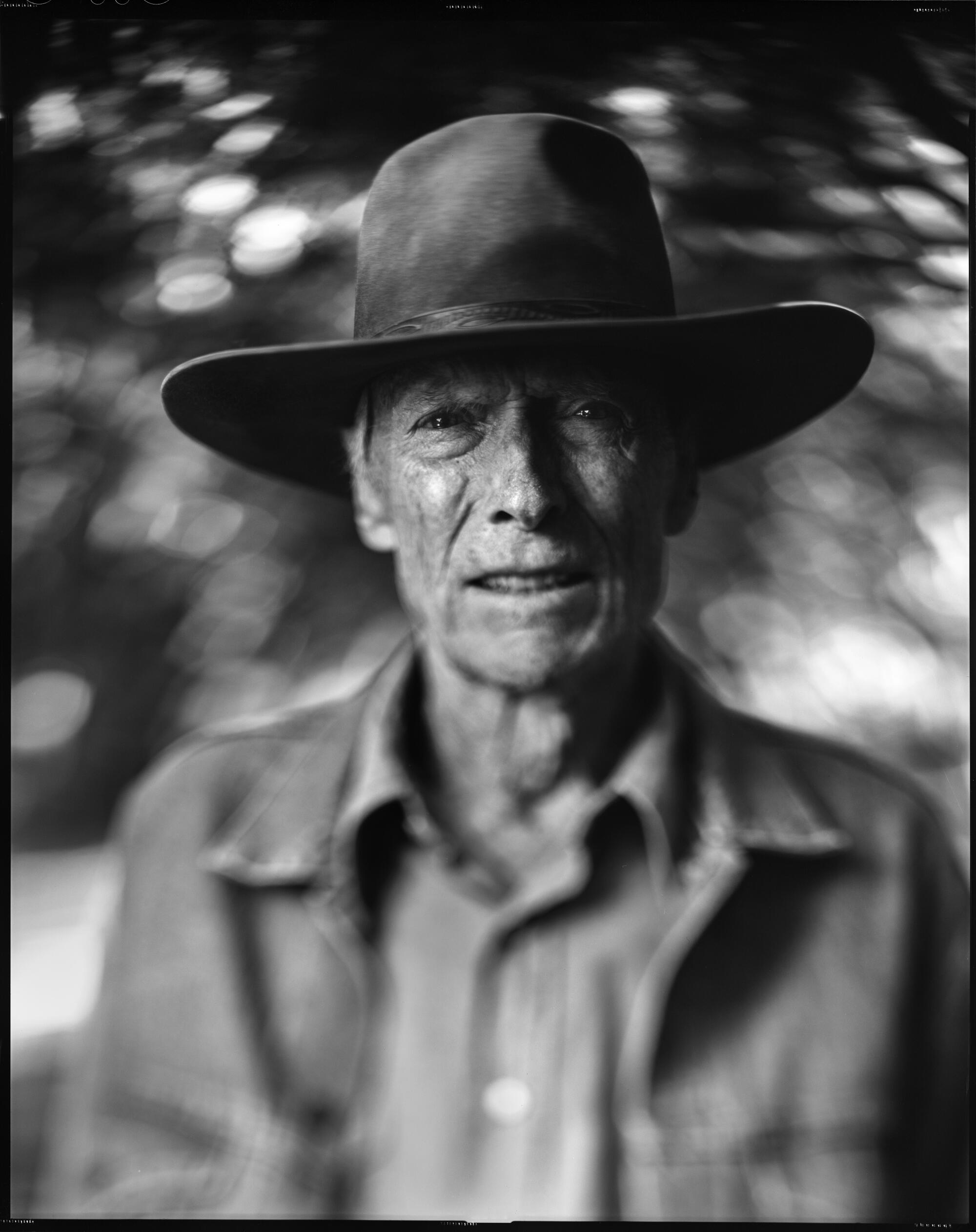
Sometimes, I do feel a little guilty calling it work, in particular when an assignment involves a legend like Clint Eastwood. With research, I found a spot near Eastwood’s property with this “tunnel” of oak trees and knew this backdrop would look great with my large-format camera that uses 8x10-inch sheets of film. I pitched Eastwood my “old-timey” camera while he was driving me around the property in the truck used in his film, “The Mule.” While making pictures on this tree-lined road, we were interrupted several times by passing cars (I needed him in the middle!), but he was incredibly patient and returned to his pose each time and I was able to get five frames of film! At our second location, which I had preset with lighting and a hand-painted background by my wife @nancypastorphoto, we made pictures for about 10 minutes and a fitting end to our session came when I got the one frame of his sly smile, as he jokingly stuck out his tongue and commented it was time for a drink.
Robert Gauthier
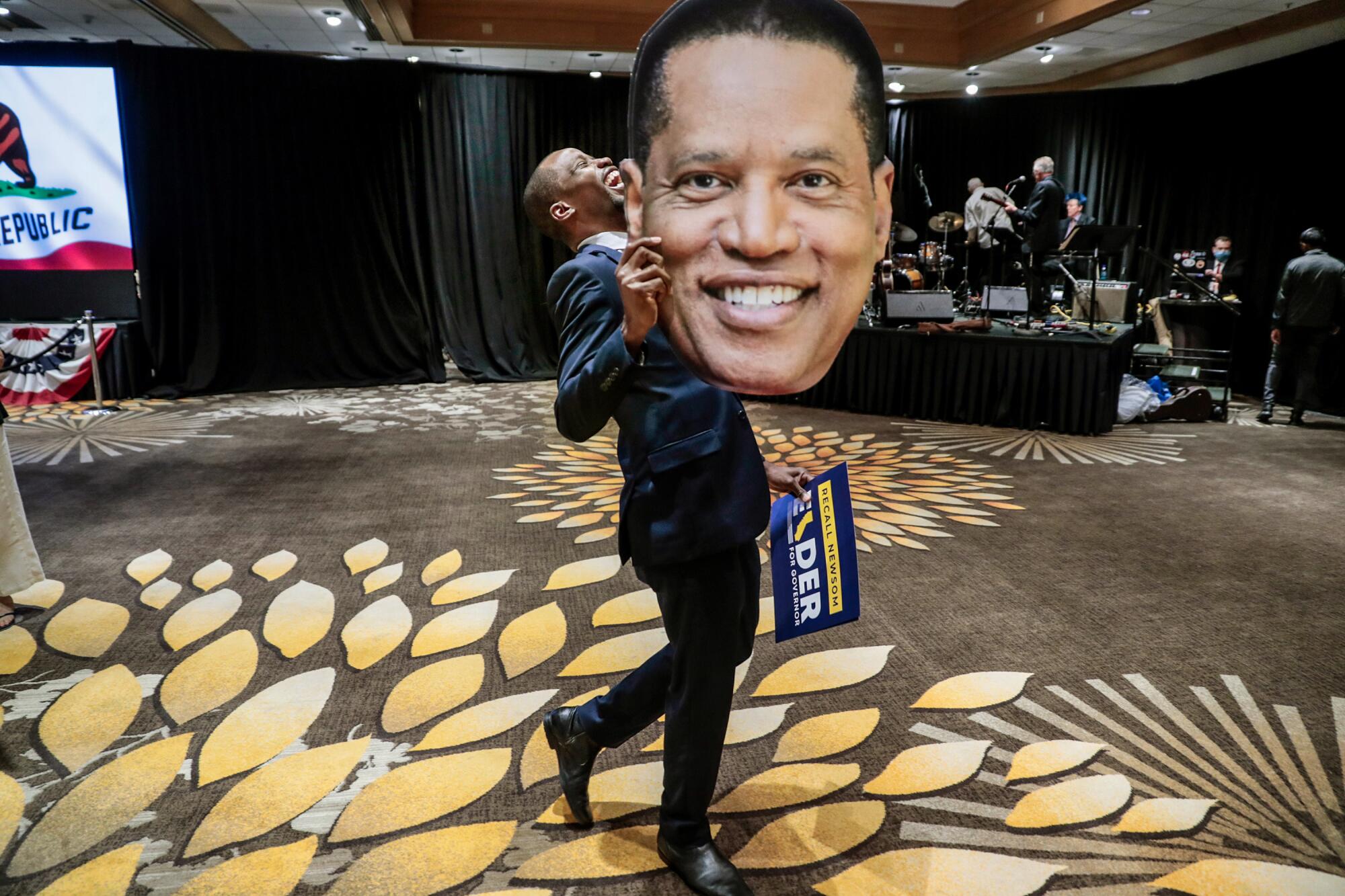
Arriving early to photograph an election party is always challenging. It’s simple — there’s no one there yet. With editors anxiously waiting for a photo to post, I’m willing to take pictures of anything. It was still early when the band started playing and a dozen Larry Elder supporters gathered in the ballroom. Luckily, Errol Webber, a cinematographer from Costa Mesa, appeared as if in a dream. Dancing with a large cutout photo of the Republican candidate. There were many frames to choose from and I would photograph him often throughout the night’s event. This particular frame resonates with me. I feel I captured a genuine moment hidden inside his obvious exhibitionism.
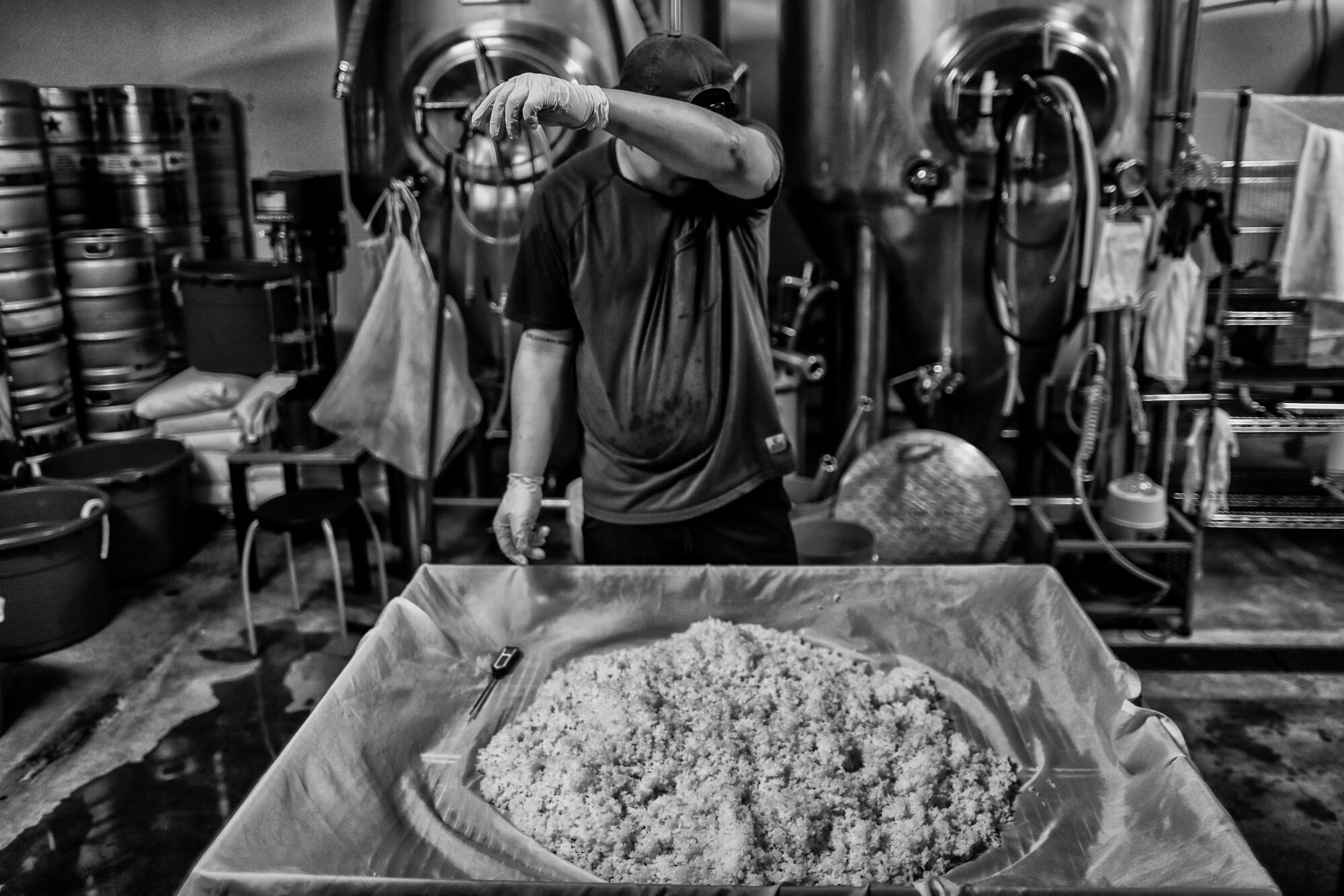
The photo of craft sake brewer James Jin sweating over a pile of rice captures everything I was hoping to show as I documented his story over the course of a few months. Jin often works alone late into the night, massaging steaming piles of rice in his meticulous pursuit of his own unique brand of sake. Leading up to this moment, he spent hours gathering data on another sake brew while precisely steaming five containers of rice stacked over a large gas burner. He is innovative, creative, smart and a really nice guy. The photo doesn’t communicate all that, but it’s still true.
Al Seib
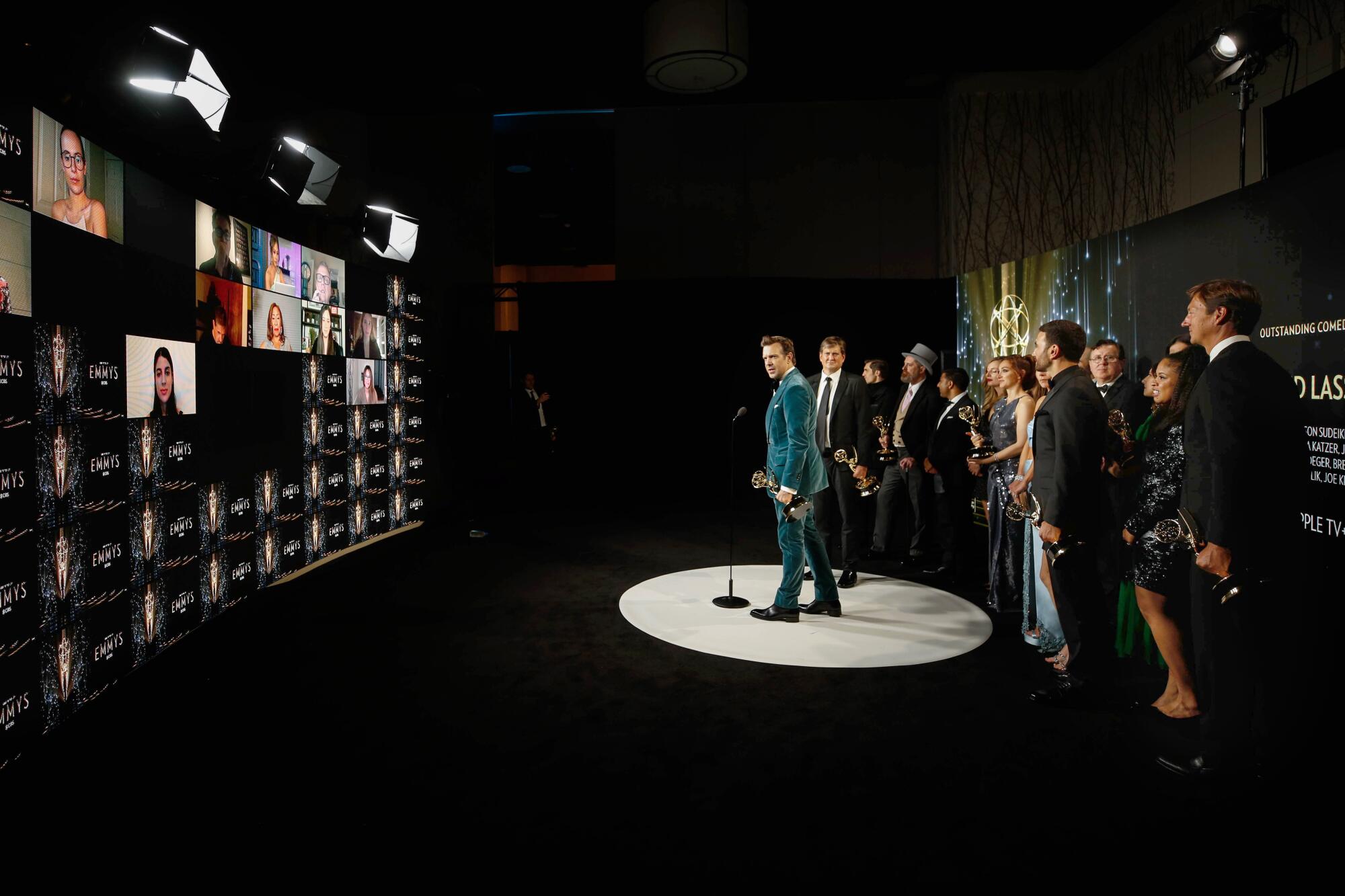
At the invitation of the Academy of Television Arts and Sciences and CBS, I was allowed to roam on the red carpet during arrivals, which also turned into the backstage of the 73rd Primetime Emmy Awards. A formation of photographers captures the fashions as the honorees walk the red carpet. Still, I am in a position farther down the carpet, looking for different, intimate views of the nominees and award winners. I’m looking for those moments when the artists who, in most cases, haven’t seen one another due to the COVID pandemic celebrate with hugs and selfies.
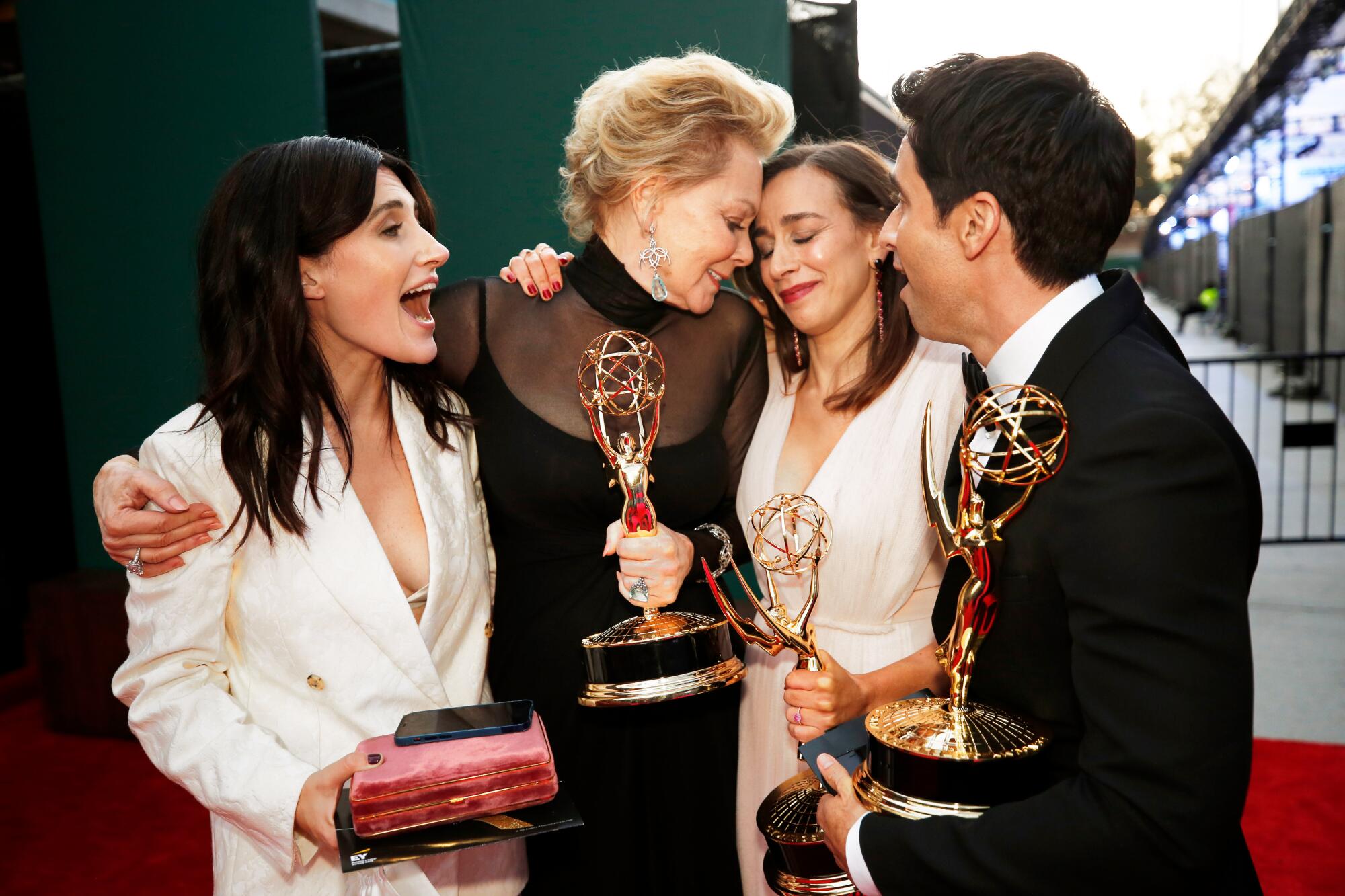
Once the show began, my red carpet position, a small street between a parking structure and a hotel, became the backstage for winners carrying their Emmy statuettes. Early winners included “Hacks” showrunners and co-creators Jen Statsky, Lucia Aniello and Paul W. Downs, who won for their writing. We watched a TV monitor of the broadcast when it was announced that Jean Smart won for lead actress in a comedy for her role in “Hacks.” The three screamed with joy and waited for her to emerge behind the backstage curtain clutching her Emmy. They all hugged, with a few tears.
This is just one of many memorable moments — shared by artists celebrating their craft — found at the other end of the red carpet and backstage.
Mariah Tauger
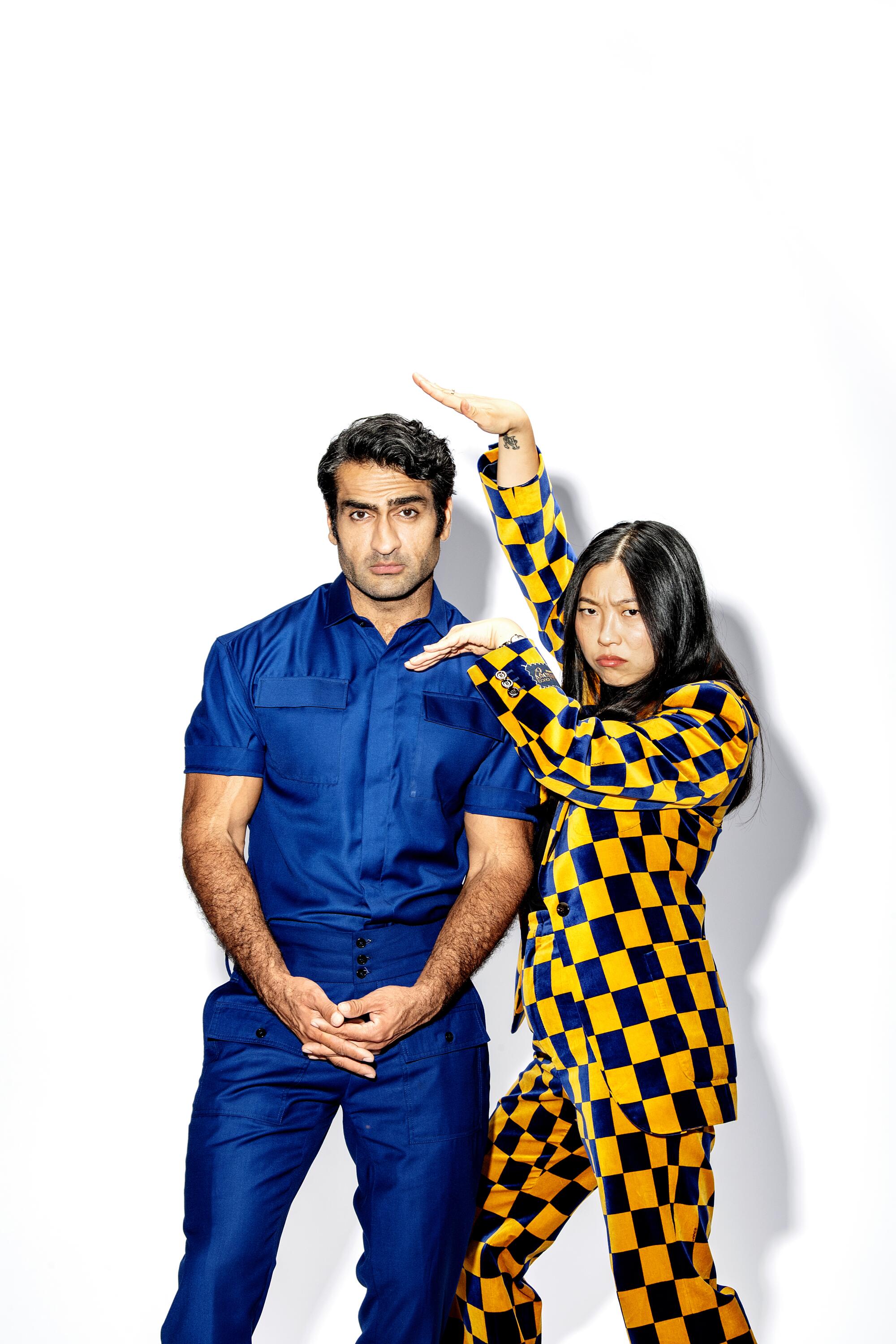
I loved, loved, loved photographing these two! First impressions can be epic, and these two did not disappoint. Those coordinating outfits, amazing!! Awkwafina and Nanjiani were not only incredibly generous with their time (one hour, which is unheard of, mind you), but both were so laid back and willing to roll with just about anything I asked of them, including Voguing (which Awkwafina killed).
Kent Nishimura
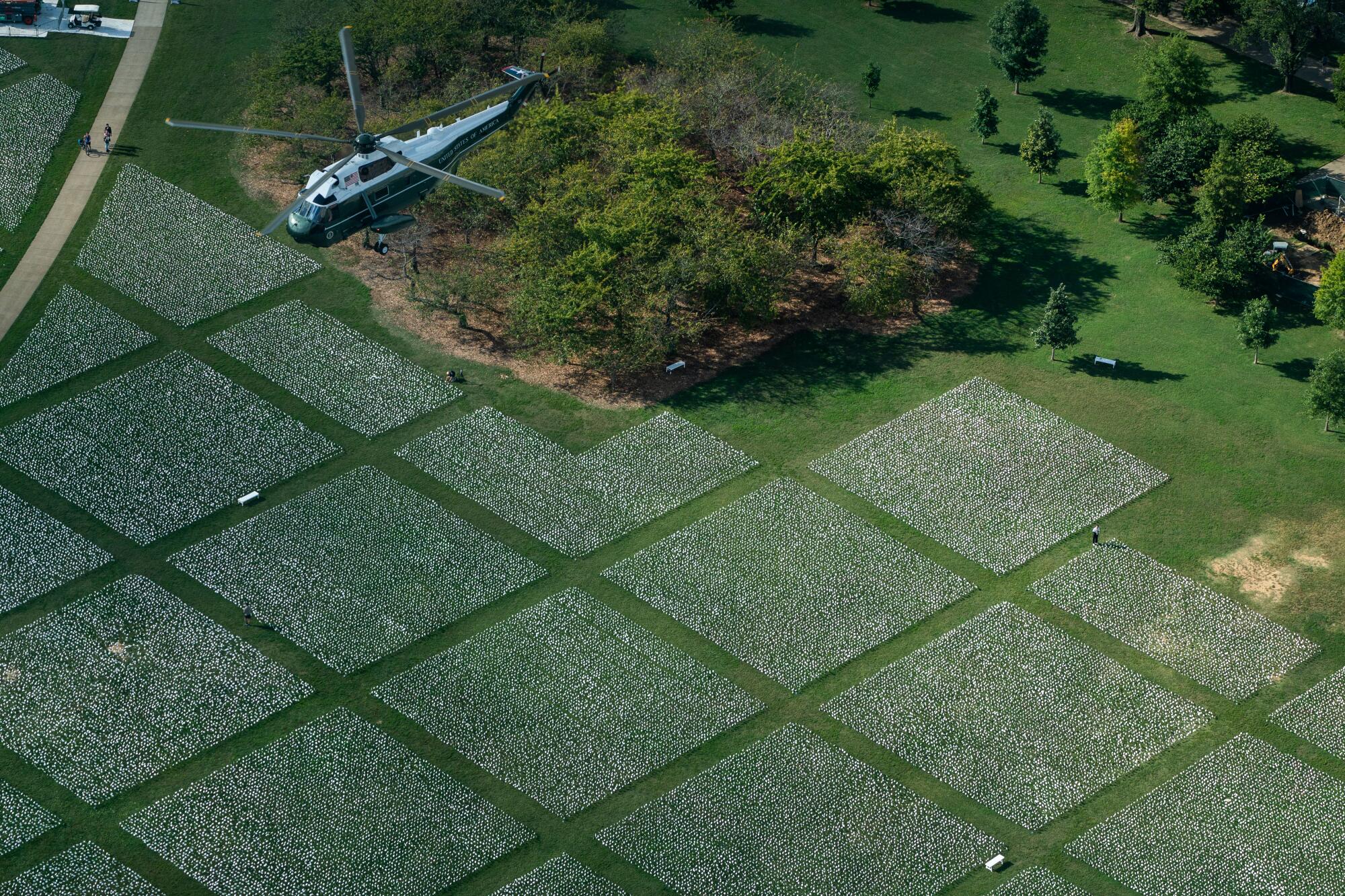
The 3:30 p.m. slot was the only one left for a reservation to visit the Washington Monument’s observation deck. I had hoped I’d get up there so it would coincide with President Biden’s departure from the White House for Joint Base Andrews. I knew that Marine One’s general path from the White House’s South Lawn would take it right over the “In America: Remember” public art installation. So, after getting to the monument’s observation deck, I staked out a position overlooking the 20-acre installation and patiently waited while I watched, through my telephoto lens, the president walking from the White House to Marine One and then for the helicopter to take off and fly over it, only forming up with the two other decoy helicopters farther out over the District.
More to Read
Sign up for Essential California
The most important California stories and recommendations in your inbox every morning.
You may occasionally receive promotional content from the Los Angeles Times.


